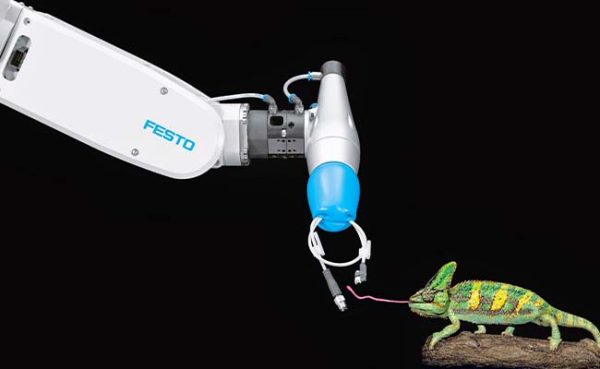Preparing Students for Industry 4.0
 By Ido Yerushalmi, CEO, Intelitek
By Ido Yerushalmi, CEO, Intelitek
Even before COVID-19, there were upward of two million unfilled manufacturing sector jobs in the U.S. There were simply not enough skilled applicants. Now, the COVID pandemic has revealed gaps in our supply chain. This crisis is challenging our capability to be sustainable and self-sufficient, but it also presents an opportunity. We can invest in Industry 4.0 to use technology to create efficiency and bring back manufacturing that was previously offshored. Implementing cutting edge manufacturing technology will allow the U.S. to regain its world leadership position in industry.
One challenge to creating a pipeline of qualified applicants is the general perception of jobs in manufacturing. Parents often hustle their students past manufacturing opportunities at career fairs saying, “That isn’t for you.” But the fact is that more emerging technologies like artificial intelligence, robotics, smart-sensors, and the Internet of Things often come together in manufacturing settings.
Manufacturers are looking for talented problem solvers who have a multidisciplinary understanding of hardware and software and who possess the ability to learn new topics and upskill on the go. Unlike their grandparents, these workers will not be stuck behind a machine for their careers. They will be highly skilled, mobile, and much in demand as they demonstrate their abilities to continually learn, adapt to new technologies, and solve new problems.
An alternative to college
Skyrocketing college costs are moving more students to consider alternate career paths. Manufacturing presents a viable option.
One benefit of manufacturing is that these companies value training and development. They will pay workers to go through training courses. Many science, technology, engineering, and mathematics (STEM) and career and technical education (CTE) programs are accredited and allow students to work toward a degree or certification.
However, there is a sizable gap between the demand for skilled workers and what students are learning in school. We are not teaching much advanced technology, such as coding or robotics. Many students graduate without ever taking a course in these areas. This needs to change. These are the skills students will need as they enter the workforce.
Some districts are addressing this gap by changing the course descriptions from “Shop” to STEM. It’s helped raise the profile of courses and expand student interest. However, CTE still carries outdated expectations of job skills compared to STEM. These terms are perceived very differently, and from now on, all jobs will require advanced technical skills – not just robotics and manufacturing.
Here are some ways schools can increase student interest in Industry 4.0 jobs:
- The question of perception is key. Students may have outdated ideas of what a manufacturing career entails. Bring industry people in to talk to students, share their path, and what they are doing now.
- Talk about the salary upside. Students understand money. They’re motivated by earning potential. The manufacturing industry offers excellent job opportunities and high salaries. Give them real-world examples of what they can expect to make if they have certain skills and certifications.
- Take field trips to factories. Students will want to understand the skills needed to work in such a place.
- Show videos of manufacturing plants. Share the experience and preview the skills that need to be learned. Show students the future of manufacturing.
- Make school coursework compelling. Many programs are adopting new technology, but they still have the old “shop” feel. Let students see manufacturing for what it is today – high tech. Expose them to all the new technologies.
- Make it worth their while. Let students accumulate credits or work toward certifications that they can take with them when they graduate. With these in hand, they can either go on to further study or get a job.
- Partner with local companies or a regional education center to create a marketing and branding campaign about the unmet needs in emerging technology jobs and the opportunity to solve real challenges that benefit both the community and the economic success of the country.
Manufacturing offers a myriad of opportunities for young job seekers. Exposing them to these fields early and helping them acquire the right skills will put them on a career path for satisfying, lucrative, and stable work.
Ido Yerushalmi is CEO of Intelitek, a provider of Industry 4.0 blended-learning solutions for technology education. For more information, visit https://intelitek.com/.
This article was originally published in SmartBrief for the National Association of Manufacturing.







